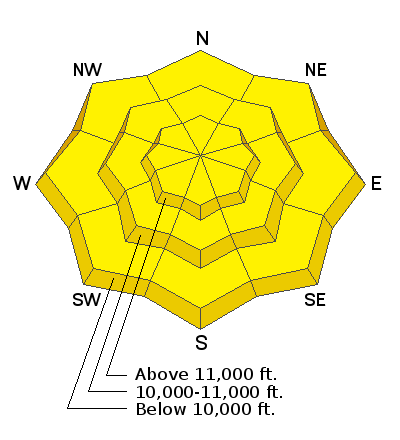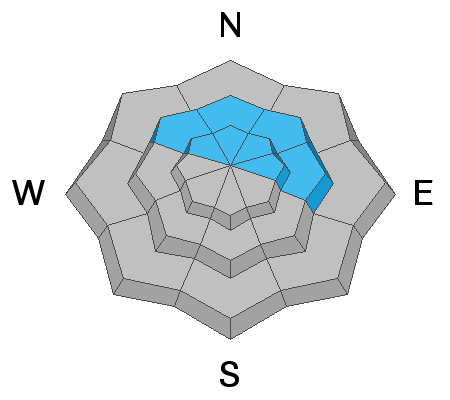This will be the last weekend for regularly scheduled forecasts.
Road Conditions: The road is mostly dry. Some mud and snow exists near the upper end.
Grooming: Grooming has been suspended for the season.
The Avalanche Research Program at Simon Fraser University is conducting an
online survey to examine how people use avalanche safety information. They want to hear from all backcountry users to understand how they process information provided in public avalanche forecasts. Anyone who completes the survey before May 15th will be entered to win cash prizes.
Uncertainty, Risk, & Decision Making: before, during, and after COVID-19 - Read this thought-provoking
blog post about how we take risks by guest author Tom Diegel.
24 Hour Snow 0" Weekly Snow 0" Base Depth in Gold Basin 63" Wind SE 10-15 Temp 25F
Weather: Skies are clear and we got a good re-freeze last night. Look for sunny skies today, light SW winds, and high temps near 50 degrees. Saturday also looks warm and dry. On Sunday, a weak but cold system will drop in from the north bringing clouds and a very slight chance for snow showers. Temperatures will crash as we remain under a cold, NW flow through Wed.
Snowpack: With a good re-freeze last night we should see a return to corn snow conditions today. Maggie Nielsen was up Wednesday and reported good corn snow on a SW aspect at around 10,500'. She also detailed a complex snowpack with isolated collapsing in shallow snowpack areas at lower elevations.
Read her observation here.
I've been observing a strengthening snowpack on northerly aspects and stability tests are not producing results on the faceted weak layer from February. Spatial variability is still a key component however, and there are still places where weak facets can be found beneath a slab that is 2'-4' thick. Avoid steep wind loaded slopes and shallow areas in the alpine or right around treeline. Likely trigger points include steep convexities and areas around rock outcroppings, sub ridges, or along slope margins. The more radical the terrain, the greater the likelihood for triggering an avalanche, and I'm still not feeling all that confident about steep, north-facing terrain.










